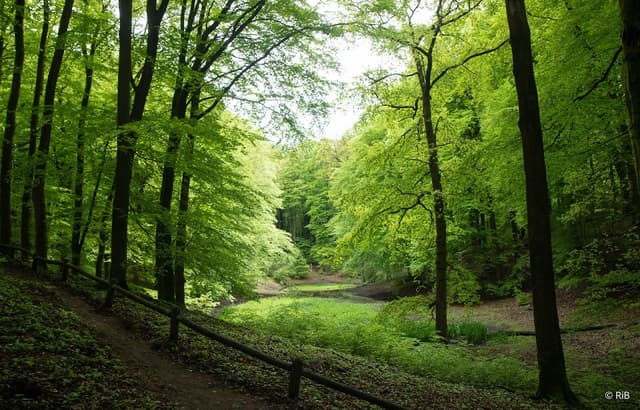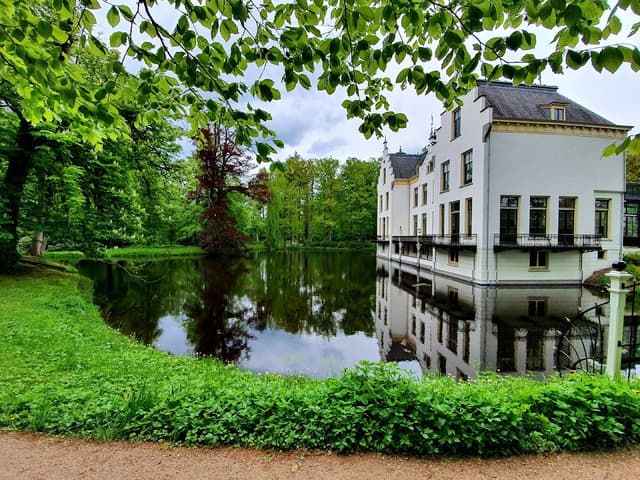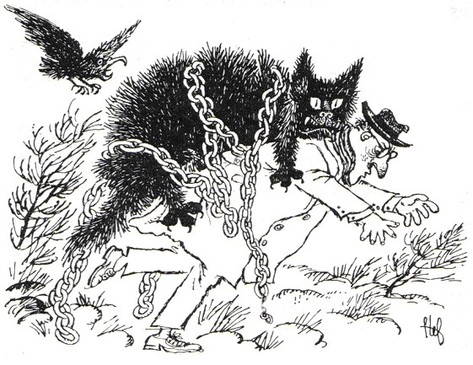Folklore of the Veluwe

Hole Solse (Solse gat)
The legend of the Solse Gat, a mysterious hole in the forest near Putten, tells of a once-grand monastery that stood in the area. According to the tale, the monks who resided there had forsaken their vows and, in a pact with the Devil, sold their souls in exchange for endless indulgence. Every night, the monastery became a scene of dark revelry, where demons and witches joined the monks in unholy feasts, with the Devil himself supplying copious amounts of food and wine.
This sinful revelry continued until one fateful Christmas Eve. As a violent storm raged outside, the monastery's bells tolled ominously at the stroke of midnight. Suddenly, a deafening crash echoed through the night. When the storm subsided, the townspeople hurried to the monastery, only to find that it had completely vanished. In its place was a deep, dark hole, a grim reminder of the monastery's mysterious fate.
To this day, it is said that if you venture near the Solse Gat on a quiet night, you might still hear the ghostly tolling of the monastery's bells, a haunting echo of the souls lost to their dark bargain.

The Woman in black (Staverden)
The legend of the Woman in Black at Castle Staverden is a haunting tale that dates back to the early 14th century, long before the current castle was built in 1835. The story begins in Kasteel de Wildenborch, where a young noblewoman lived with her parents. On her mother’s deathbed, the woman was bound by a promise to marry a man she did not love, a promise made under great pressure.
However, after her parents' deaths, she followed her heart and married a man named Herman, whom she deeply loved. Their happiness was tragically short-lived. The man she had originally been promised to, consumed by jealousy and anger, murdered Herman. Heartbroken and filled with grief, the woman fled to Castle Staverden, seeking refuge from the world that had brought her so much sorrow.
Isolated and consumed by her despair, she eventually succumbed to loneliness and died within the walls of the castle in 1356. Since then, her restless spirit has been seen wandering the grounds of Castle Staverden, draped in black, mourning the love that was stolen from her. To this day, locals claim to catch glimpses of the Woman in Black, a sorrowful figure eternally bound to the place where she sought solace but found only death.
On a small, secluded island behind the garden of Castle Staverden, there stands a solemn memorial stone, a tribute to Leonora van Barchem, better known as the Woman in Black. Her tragic story has been passed down through the centuries, and this stone serves as a reminder of the sorrow she endured.
The memorial stone on the island stands as a quiet testament to Leonora's enduring legacy, marking the spot where her sorrowful presence can still be felt by those who visit.

The Demon from Hoge Duvel (Ossaert)
Before delving into the tale of the Hoge Duvel, it's essential to first understand the legend of Ossaert, a fearsome water demon with a dark origin. Ossaert was not always a creature of terror; he was once an ordinary dog. However, his owner, known for his cruelty, brought misery to both himself and Ossaert, condemning them to a restless afterlife. As a result, Ossaert was transformed into a demonic entity, often appearing as a large black dog with fiery eyes. But this malevolent spirit is not limited to one form—Ossaert can also take the shape of a rabbit, horse, or donkey, further spreading fear wherever he roams.
The tale of the Hoge Duvel begins with a servant who spoke of Ossaert, the water demon that once haunted the waters of Uddelermeer. In days long past, Ossaert plagued the region, bringing misfortune and fear to those who lived nearby. His reign of terror continued until a holy monk, armed with faith and courage, confronted the demon and banished him to the depths of the Hoge Duvel, a place where he was condemned to remain for 99 years.
Those years have long since passed, and the story of Ossaert and the Hoge Duvel has faded into obscurity, becoming one of the lesser-known tales of the region. Yet, whispers of the demon still linger, a reminder of the dark forces that once lurked beneath the surface, waiting to be unleashed once more.

The Frenchman who drowned with horse and all.
Many of the legends from this region revolve around the mysterious forests and the eerie occurrences that happen within them. It would indeed be incomplete not to mention the will-o'-the-wisps, the ghostly lights that are said to lure travelers into danger. These elusive spirits are often seen flickering in the distance, leading the unwary deeper into the woods or towards treacherous swamps.
One particularly haunting tale involves a Frenchman who met a tragic end, drawn to his doom by these very lights. The story goes that the Frenchman was traveling through the forest on horseback when, suddenly, his horse became spooked by a wisp dancing in the dark. Panicked, the horse bolted off the path and plunged straight into a nearby swamp. The treacherous ground quickly gave way, and both horse and rider were swallowed by the mire, sinking to their deaths.
Years later, locals stumbled upon the remains—skeletons of both the man and his horse, along with remnants of weapons, still half-buried in the swamp. The discovery confirmed the old tale, reminding the people of the dangers that lurk in the forest and the mysterious powers of the will-o'-the-wisps. The story serves as a chilling warning to those who might be tempted to follow the lights, for they might lead not to safety, but to a watery grave.

The home for unique & authentic travel
